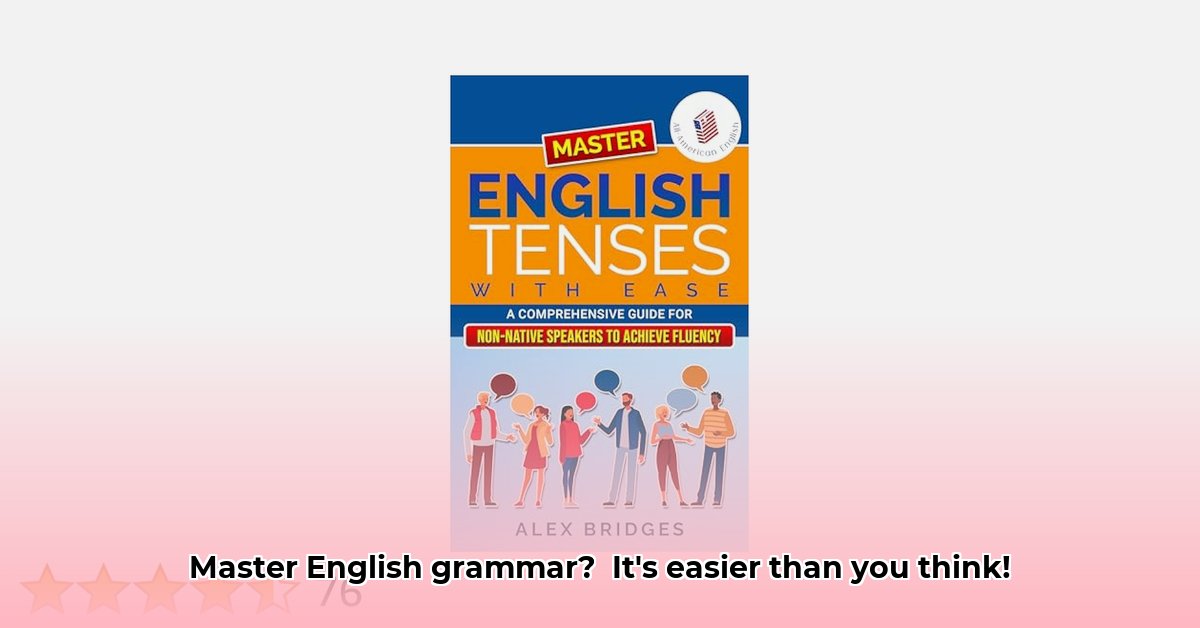
Let's be honest: grammar can feel like a daunting mountain to climb. Those pesky rules, confusing exceptions, and the fear of making mistakes can be enough to make anyone want to give up. But what if I told you mastering English grammar doesn't have to be a Herculean task? This guide provides a straightforward, friendly walkthrough to help you conquer your grammar anxieties and boost your confidence in both writing and speaking. We'll break down complex concepts into manageable pieces, tackle common errors head-on, and even share some fun techniques to make learning enjoyable. Ready to unlock fluent English? Let's begin! For more on verb identification, check out this helpful resource on verb types.
Building Your Grammar Foundation: The Basics
Think of grammar like building a house. You wouldn't start with the roof, would you? You need a solid foundation. In grammar, that foundation is understanding the parts of speech – the essential building blocks of every sentence.
- Nouns: Names of people, places, things, or ideas (e.g., dog, city, hope). They are the who and what of your sentences.
- Verbs: Action words or words that describe a state of being (e.g., run, is, become). They show what's happening.
- Adjectives: Words that describe nouns (e.g., big, red, happy). They add detail and color.
- Adverbs: Words that modify verbs, adjectives, or other adverbs (e.g., quickly, very, extremely). They specify how, when, where, or to what extent.
- Pronouns: Words that replace nouns (e.g., he, she, it, they). They prevent repetition and make writing smoother.
- Prepositions: Words that show the relationship between a noun/pronoun and another word (e.g., on, in, at, above). They indicate location and connection.
- Conjunctions: Words that connect words, phrases, or clauses (e.g., and, but, or, because). They create flow and link ideas.
- Interjections: Words expressing strong emotion or surprise (e.g., Wow!, Ouch!). They add expressive punctuation.
Mastering these parts of speech is your first step toward fluent English. Do you find yourself often confusing prepositions and conjunctions? Many learners do! Let's tackle that confusion next.
Sentence Structure: The Blueprint of Your Grammar
Now that we have our building blocks, let's learn how to arrange them to create clear and effective sentences. Sentence structure is the blueprint of your grammatical "house." Every sentence needs a subject (who or what the sentence is about) and a predicate (what the subject does or is).
For instance, in "The cat sat on the mat," "The cat" is the subject and "sat on the mat" is the predicate.
Different sentence types exist:
- Simple Sentences: One independent clause (a complete thought): The bird sings.
- Compound Sentences: Two or more independent clauses, often joined by conjunctions: The bird sings, and the sun shines.
- Complex Sentences: One independent clause and one or more dependent clauses (clauses that can't stand alone): Because it was sunny, the bird sang.
Practice dissecting sentences. Understanding their structure is key to constructing your own grammatically correct sentences. Did you know that 80% of grammar errors stem from misunderstandings of sentence structure?
Conquer Common Grammar Gremlins
Many common errors arise from overlooking the basics. Let's address some frequent offenders:
- Subject-Verb Agreement: The verb must agree in number with the subject. (The dog runs, not The dog run).
- Pronoun Agreement: Pronouns must agree with the nouns they replace in number and gender. (Everyone brought their book. - while grammatically questionable, it's common and evolving.)
- Misplaced Modifiers: Modifiers should be placed close to the words they describe. (Walking down the street, I saw a dog, not Walking down the street, a dog was seen.)
- Comma Splices: Don't join independent clauses with only a comma. (I went to the store; I bought milk, not I went to the store, I bought milk.).
- Dangling Modifiers: Makes sure a modifier clearly refers to the noun or pronoun it modifies. (To improve my writing, grammar exercises are helpful, should be To improve my writing, I do grammar exercises.)
Addressing these common errors will significantly improve your writing clarity and fluency.
Level Up: Mastering Advanced Grammar Concepts
Once you've mastered the fundamentals, you can explore more advanced concepts:
- Verb Tenses: Past, present, future, and their variations (perfect, continuous, etc.). Using tenses accurately adds precision to your writing.
- Passive Voice vs. Active Voice: Learning when to use each. Active voice is generally preferred for clarity.
- Relative Clauses: Clauses that add extra information about nouns or pronouns ("The book, which I borrowed from the library, was fascinating").
- Subjunctive Mood: Used for hypothetical situations, wishes, demands, etc. ("I wish I were taller").
These advanced topics build upon the foundation you've already established.
Resources and Tools for Continued Success
You don't have to learn grammar in isolation! Numerous resources are available:
- Online Grammar Checkers: Many free and paid tools can detect and suggest corrections.
- Interactive Grammar Exercises: Websites and apps offer engaging practice.
- Grammar Workbooks and Textbooks: Provide structured lessons and exercises.
Remember, mastering grammar is a journey, not a sprint. Be patient, celebrate your progress, and continued effort will yield results.